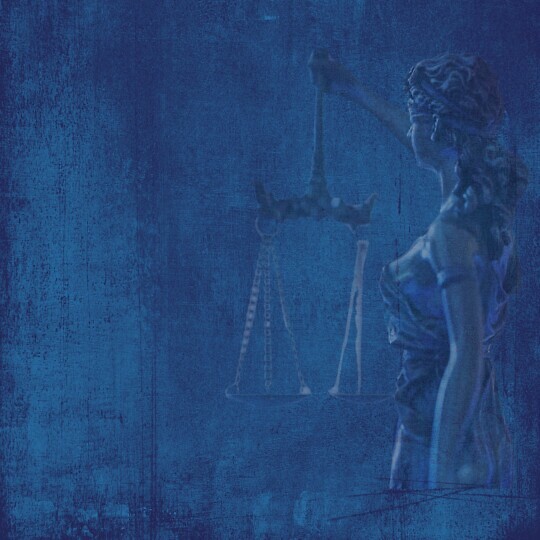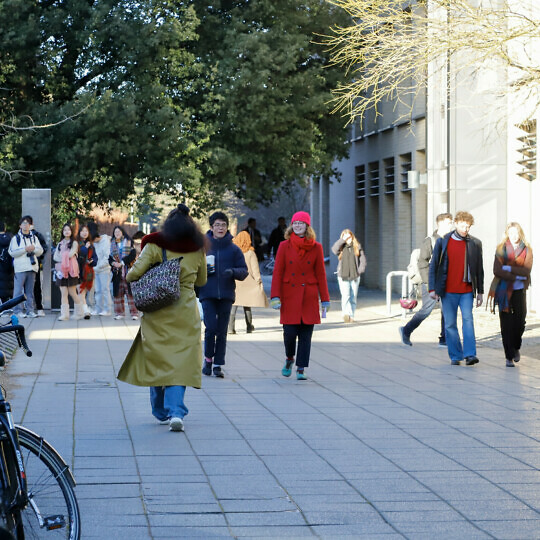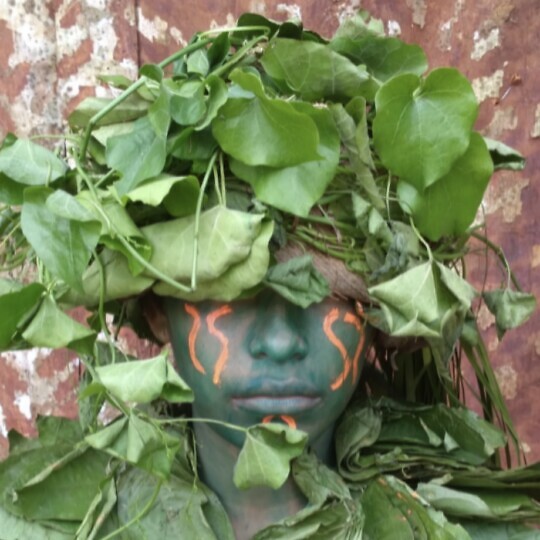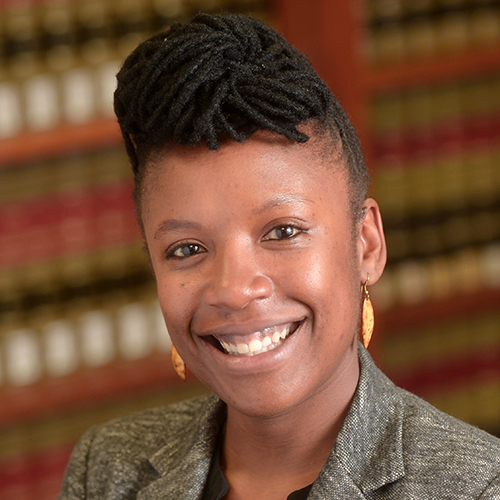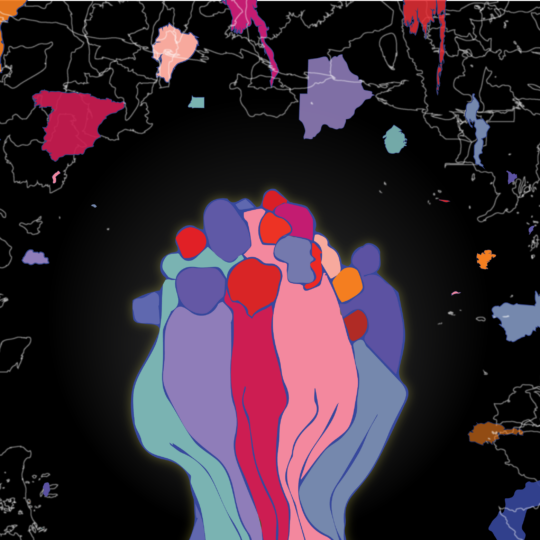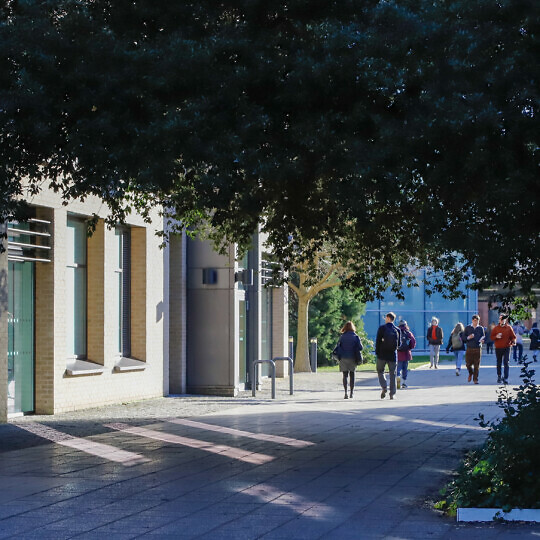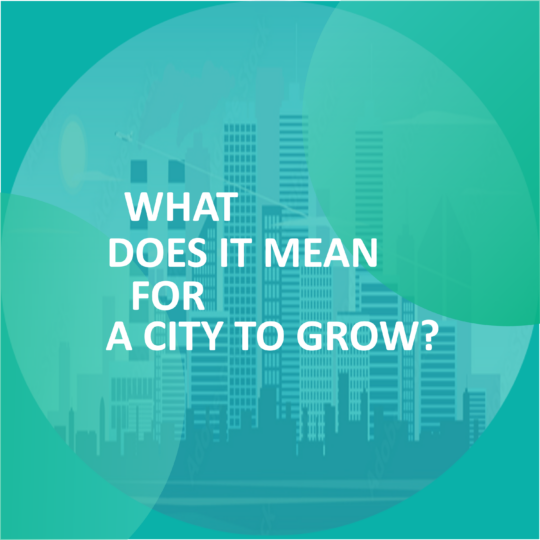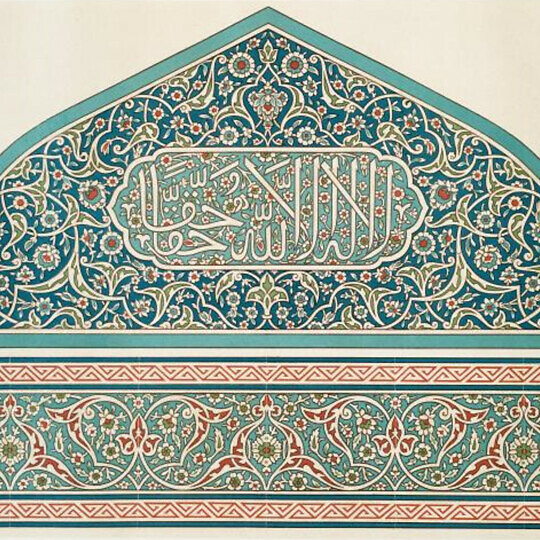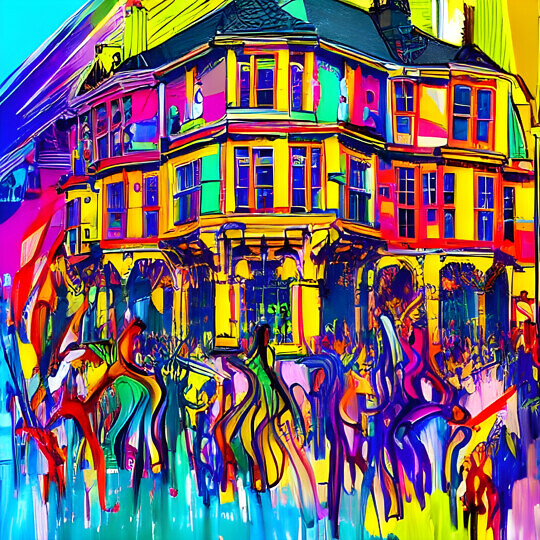| 15 May 2015 - 16 May 2015 | All day | CRASSH, Alison Richard Building, 7 West Road, CB3 9DT - SG1&2 | |
- Description
- Programme
- Abstracts
Description
Registration is now closed.
Twitter Hashtag: #AfricanHC
Conveners
Britt Baillie (University of Pretoria/University of Cambridge)
Chris Boonzaaier (University of Pretoria)
Leanne Philpot (University of Cambridge)
Marie Louise Stig Sørensen (University of Cambridge)
Dacia Viejo Rose (University of Cambridge)
Summary
This conference is the 16th Annual Research Seminar by the Cambridge Heritage Research Group.
Heritage in Africa is increasingly employed as a vehicle for development. The desire to make heritage pay is palpable. Can one really put the onus on Africa’s past to not only be self-sustaining but also to fuel development? How can Africa’s heritage be used to shape and secure a sustainable future for the continent?
This conference aims to explore the ways in which heritage can promote, secure or undermine sustainable development in Africa, and in turn, how this development affects conceptions of heritage in Africa. As the countries of Africa attempt to forge burgeoning economies and societies in the twenty-first century, cultural heritage has a role to play as the nexus where the past and the future meet.
This conference will attempt to explore and challenge the seemingly dichotomous relationships between the past and the future, preservation and development, conservation and innovation in Africa. This conference has two broad aims: a) to understand the relationship, tensions and challenges between heritage, development and sustainability in Africa, b) to understand how heritage is conceptualized in a diverse African context in light of developing societies, economies and priorities.
We are interested in papers which adopt local, national, regional or Pan-Africanist perspectives to examine the dynamics of heritage and sustainable development, and expand our understandings of the meaning of heritage from within a varied African constituency.
In what ways do heritage, sustainability and development intersect in African nations? Can heritage be conceived as a motor for innovation and change, or is it a barrier to development? What challenges or tensions arise as nations, cities and communities employ cultural heritage for economic, touristic, or societal development? What can heritage researchers learn from the African experience? This conference adopts a perspective which explores African conceptions of what heritage is or can be, and therefore we encourage papers which examine and challenge the relationships between tangible / intangible aspects of heritage, natural / cultural heritage, and the moveable / immoveable. We also encourage an interdisciplinary focus with innovative dialogues made between heritage studies, archaeology, anthropology, international development, political science, geography, sociology and museum studies.
Sponsors

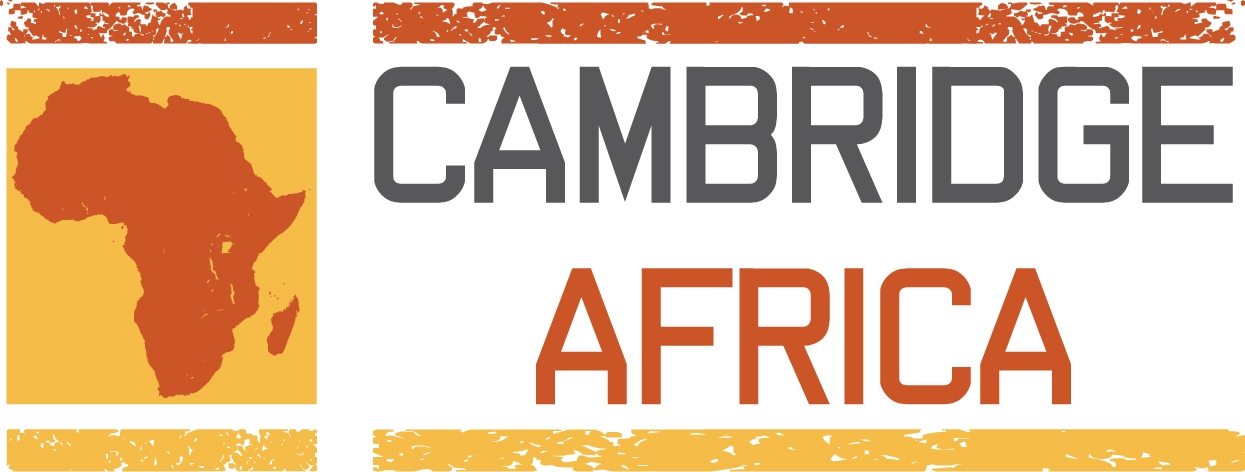
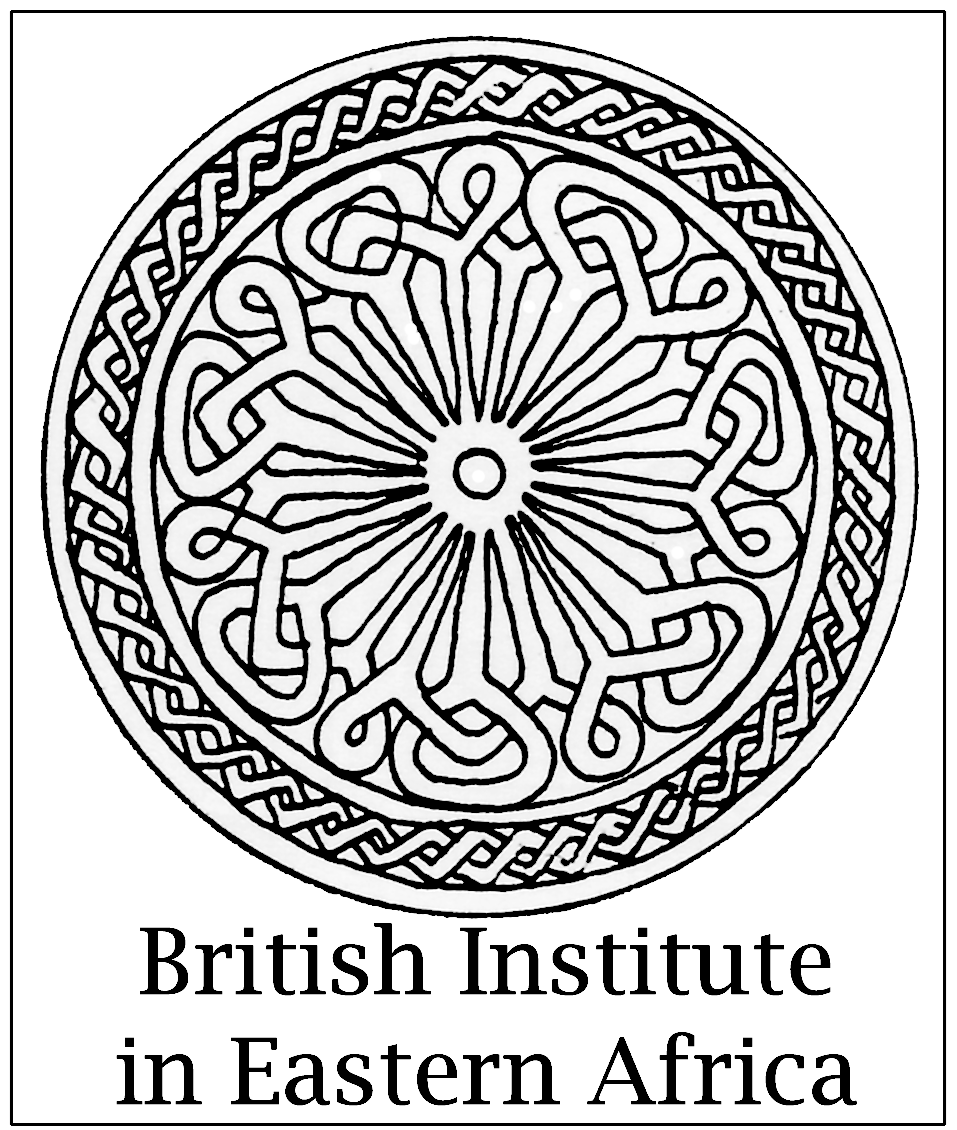

Supported by the Centre for Research in the Arts, Humanities and Social Sciences (CRASSH), the Cambridge-Africa Alborada Research Fund, the British Institute in Eastern Africa and the McDonald Archaeological Institute.
Accommodation for speakers selected through the call for papers and non-paper giving delegates
We are unable to arrange or book accommodation, however, the following websites may be of help.
Visit Cambridge
Cambridge Rooms
University of Cambridge accommodation webpage
Administrative assistance: events@crassh.cam.ac.uk
Programme
| DAY 1 — FRIDAY 15 MAY 2015 | |
| 8.30–9.00 | Registration |
| 9.00–9.20 | WELCOME
|
| 9.20–10.00 | KEYNOTE
|
| 10.00–11.00 | BEYOND THE 'NATURE' 'CULTURE' DIVIDE
Chair: Paul Lane (Uppsala University) |
| 11.00–11.20 | Coffee break |
| 11.20–12.20 | RETHINKING SUSTAINABILITY
Chair: Matt Davies (University of Cambridge) |
| 12.20–13.20 | HERITAGE AND THE 'AFROPOLIS'
Chair: Britt Baillie (University of Pretoria) |
| 13.20–14.20 | Lunch |
| 14.20–14.30 | Pauline Essah Visiting African Researchers Showcase |
| 14.30–15.30 | REMEMBERING CONFLICT AND CONTESTATION
Chair: Marie Louise Stig Sørensen (University of Cambridge) |
| 15.30–15.50 | Coffee break |
| 15.50–16.50 | THE FUTURE OF THE COLONIAL PAST
Chair: Leanne Philpot (University of Cambridge) |
| 16.50–17.30 | KEYNOTE
|
| 17.30 | Drinks Reception and Book Launch |
| DAY 2 — SATURDAY 16 MAY 2015 | |
| 9.00–9.40 | KEYNOTE
|
| 9.40–11.00 | PRESERVING TRADITIONAL KNOWLEDGE
Chair: Chris Boonzaaier (University of Pretoria) |
| 11.00–11.20 | Coffee break |
| 11.20–12.40 | ENGAGING HOST COMMUNITIES
Chair: Webber Ndoro (Director of the African World Heritage Fund) |
| 12.40–13.40 | Lunch |
| 13.40–14.40 | HERITAGE FOR DEVELOPMENT
Chair: Dacia Viejo Rose (University of Cambridge) |
| 14.40–15.00 | Coffee break |
| 15.00–15.40 | KEYNOTE
|
| 15.40–16.40 | PANEL DISCUSSION Chair: Ndukuyakhe Ndlovu (University of Pretoria) With: Webber Ndoro, Chris Boonzaaier, Paul Lane, Marie Louise Stig Sørensen, Britt Baillie, and Dacia Viejo Rose |
| 16.40 | Close |
Abstracts
Paul Lane (Uppsala University): African cultural heritage & economic development: an exploitable asset and a restraint on growth
The term ‘heritage’ means different things to different people, and has diverse connotations even within related disciplines and discourses. Literally meaning ‘that which can be inherited’, the term is now used to refer to all forms of cultural property, including its common use within archaeology in reference to specific artefacts or sites; within ecology and conservation to refer to ecosystems and landscapes; and within anthropology, history and development studies as a synonym for local tradition and knowledge. The term tends to be seen as a positive attribute; as something that needs to be protected from unrestrained modernisation; and as a resource that can be employed to promote tourism, guide development based on ‘indigenous knowledge’, or simply act as a source of pride. However, at a time of increasing pressure to boost economic growth, Africa’s multi-faceted heritage is both a source to be tapped and a potential barrier to rapid development. What are the implications of these different assessments of the ‘worth’ of Africa’s tangible and intangible heritage? Is the Euro-American model of social, environmental and archaeological impact assessments ahead of ‘development’ sufficient mitigation for the loss of ‘heritage resources’? If so how will these assessments be organised, funded, and tailored to local needs? Should we be producing integrated, interdisciplinary ‘heritage impact assessments’, and if so how will these rank local and national economic interests alongside the diverse imperatives of individual academic disciplines? What role should local communities have in determining what gets protected, how well placed are they to make these judgements, and by which criteria? Using recent examples from across sub-Saharan Africa as case studies, this paper explores the complexities of these issues and the kind of debates they are engendering today.
Susan Keitumetse (Botswana University): Needle in a haystack? Community cultural heritage in wilderness and wildlife tourism environments of southern Africa
Wildlife and wilderness environments currently dominate resources conservation and management models in southern Africa. Therefore plans for protection of natural heritage resources heavily obscure the development of conservation initiatives specific to cultural and heritage resources management, making it inevitable that approaches initiated for natural heritage are directly adopted, rather than adapted, into the management and conservation of cultural heritage resources. In most parts of southern Africa, this adoption is influenced by the need for a diversified tourism product. However, this approach poses a challenge for sustainable development of African cultural heritage because it blurs the development of conservation and management measures that are compatible with cultural and heritage resources and contribute to these resources’ sustainability. This paper highlights this scenario as it occurs in southern Africa, the inherent challenges it brings to the development of sustainable cultural heritage management approaches; and goes further to show how, and why African cultural heritage resources management strategies should strongly pursue approaches that are unique to cultural and heritage resources such as Community-Based Cultural Heritage Resources Management (COBACHREM) model that will create sustainable communities in Africa.
James Fraser (Lancaster University): Ancestral landscapes and sustainable development in the Upper Guinea Forest, West Africa
Through ca 500 years of society-ecology interaction the Upper Guinea forest of West Africa has emerged as a natural-cultural landscape. Generations of inhabitation by Mande speaking peoples, such as the Loma, has shaped a mosaic of anthropogenic soils and vegetation. Deposition of charred and fresh organic material through domestic activity at settlements and farm kitchens has created fertile anthropogenic soils. At towns and farm kitchens, extant anthrosols subject to ongoing formation are cultivated with plantain, eddoe and cassava – the most labour efficient form of food calorie production available to the Loma. “Sacred Agroforests” – featuring relic anthrosols – surround current towns and cover the sites of ruined towns abandoned by previous generations. These sites combine an upper story of culturally significant species such as C. pentandra and T. superba with a middle story of tree-crops such as kola and cocoa. Customary law forbids burning (owing to the presence of graves) and cutting certain trees (due to connections with living (kola) and dead (C. pentandra) people). These cultural bounds on removing vegetation surrounding or covering anthrosols prevents expansion/optimisation of food production on them. The reason for this is a greater value of continuing presence and importance of ancestors, who confer land tenure and status to the living but demand ritual activity and the preservation of sacred spaces in return. I argue that the Loma case can be understood as an example of inter-generational sustainability, based on a relatively closed metabolic system associated with the ‘limited good.’ This contrasts with neoliberal development models that are oriented to the ‘unlimited good,’ cause metabolic rifts, and now increasingly value nature in terms of ecosystem services to permit continued growth. To conclude, I offer some thoughts on the significance of these findings for our understanding of how African heritage can contribute to sustainable development.
Rachel King and Charles Arthur (University of Oxford): Dam nation: coping with dams and heritage in Lesotho
Within the past two decades, Lesotho witnessed the construction of two major dams as part of the five-dam Lesotho Highlands Water Project. These featured massive population relocations, insufficient heritage mitigation, and a lack of training opportunities for Basotho heritage managers. In 2008, the Metolong Cultural Resource Management (MCRM) Project was launched with funding from the World Bank to address these earlier shortcomings through a two-pronged approach: 1) to mitigate the damage to cultural heritage caused by western Lesotho’s upcoming Metolong Dam; and 2) to create much-needed domestic capacity for heritage management in Lesotho. Between 2008-2014 the MCRM Project excavated Middle and Later Stone Age and historical archaeological sites, documented rock art and removed several panels, conducted intangible cultural heritage assessments, and trained ten Basotho in archaeological field techniques and specialist skills. The culmination of these programmes was a Wenner-Gren Foundation-sponsored workshop on dams and heritage management in Africa held in July 2014, which brought together academics and government and industry representatives to draft a research and policy document for Lesotho’s government. Despite these successes, jobs for Metolong’s trainees have failed to materialise and given Lesotho’s current political instability there is little indication that the MCRM Project’s recommendations will be implemented. As Lesotho faces the construction of three more large dams, the question remains, what are the lessons learned on the ground? What have dam-impacted communities and heritage managers (foreign and Basotho) achieved insofar as creating mitigation strategies cognisant of local sensibilities, advocating for rights to employment and compensation from dam builders, and negotiating the curation of archaeological materials? And how have we as foreign, academic archaeologists re-envisioned our responsibilities in this process? This paper discusses the lessons learned from the MCRM Project and the relevance (and potential for resilience) that they hold for future dam projects in Lesotho.
Mathilde Leloup (Sciences Po / CERI): An illustration of the relationship between cultural heritage and sustainable development: the case study of Culture Bank in West Africa
The model of the Culture Bank in West-Africa was created by a Peacecorps member in 1997 in a small Malian village called Fombori (circle of Douentza), in order to overcome the failure of two earlier projects: a women’s cooperative and a community museum. The Culture Bank is an original concept composed of three structures: a museum which collects cultural heritage artefacts belonging to inhabitants of a rural village, a microcredit bank which grants money to the owners of these artefacts and an education centre which trains the beneficiaries of microcredit in the development of ‘income-generating activities’. The original quality of this model is based on the creation of an interdependence between development and cultural heritage. This produces two positive outcomes : the protection of cultural heritage from illicit trafficking, especially in rural areas (the museum), and the emergence of a sustainable local development (micro-credit) which benefits the whole community (the education centre). Recognised by the Development Marketplace of the Worldbank in 2002 and by the discretionary fund of James Wolfensohn in 2003, the Culture Bank model has been one of the success stories of the ‘Fight Against Poverty’ paradigm of the 1990s. These two funds allowed the creation of two other Culture Banks: in Kola (circle of Bougouni) and Degnekoro (circle of Dioïla) in 2004. Thanks to the support of the French Ministry of Foreign Affairs and the Ecole du Patriomoine Africain in Benin, the model of the Culture Bank has since been diffused from Mali to Togo and Benin. The model of the Culture Bank is used today as an example of the articulation between Culture and Development in the Millenium Development Goals (MDGs), and between Cultural Heritage and Sustainable Development in the post-2015 Sustainable Development Agenda. The aim of this article is to question the manner in which connections can be made between development – which refers to the future and to progress – and cultural heritage – which refers to memory and the past. I also question articulation between local and international actors, thanks to an original analysis of the local initiative of Culture Banks in Mali, Togo and Benin.
Christoph Rausch (Maastricht University): Rescuing Modernity: global heritage assemblages and modern architecture in Africa
In the late 1980s, the World Bank announced a “holistic approach” to development and subsequently turned its attention to cultural heritage as a tool in what it called post-conflict reconstruction, nation building, economic development and poverty reduction. The Bank considered Eritrea a “natural experiment” to test this new approach. In 1993, Eritrea had declared its independence from Ethiopia after decades of violent conflict, making it one of the youngest nation states on the African continent. A symbol of Eritrea’s newly won sovereignty is its capital, Asmara. Asmara remained virtually undamaged throughout Eritrea’s long struggle for national independence, as well as during another war between Eritrea and Ethiopia in 1998. Largely built under Italian colonialism, the city survives as an ensemble of early 20th-century modern architecture and urban planning.
In 2002, the Eritrean government started the Cultural Assets Rehabilitation Project (CARP), which the World Bank financed with a $5-million development loan. Focused on the preservation of Asmara’s modern architectural heritage, CARP generated much attention and support abroad, particularly after the addition of Asmara’s so-called ‘historic perimeter’ to UNESCO’s tentative World Heritage List. However, at present Eritrea remains one of the poorest countries in the world. A dictatorial Eritrean government sustains ongoing conflict over its border with Ethiopia and endorses a radical policy of self-reliance, which endangers food security and causes massive emigration.
In this paper, I inquire into the heritage valorization of Asmara’s modern architecture. Based on multi-sited anthropological fieldwork, I describe the practices of relevant state and non-state actors that, I argue, raise a number of significant questions concerning norms and forms of government today. Particularly, I am interested in the emergence of a global heritage assemblage around the modern architecture of Asmara. I ask how the modern architectural heritage of Asmara is instrumental both to the Eritrean government and to transnational organizations, but for different reasons and to different ends.
Sabine Marschall (University of Kwa-Zulu Natal): The challenges of Heritage, Tourism and Development in post-apartheid South Africa: Lessons from Inanda
Listening to speeches during Heritage Month (September) and reading media reports and political statements about heritage in present-day South Africa, makes palpable the deep gulf that continues to persist between different communities in relation to matters of heritage and their attitudes towards what should be preserved, how and why. Much of this debate centres on the relationship between heritage and development. The African majority’s need for land, basic services and employment opportunities often conflicts with the aims of sustainable development and the preservation of the country’s natural heritage, cherished by most of the white community and tourists. Sites of cultural heritage, notably the built environment, archaeological sites and battlefields, tend to be surrounded by impoverished communities, whose support for conservation is traded against the promise of employment and material benefits, mostly through tourism, conjured up by heritage conservation forces and government agents. Not only does the concept of heritage as a catalyst for development, deeply anchored in government policy, limit what can be preserved and how, but in reality, the promised tourism influx rarely materializes and where it does, communities are not benefiting much.
This paper intends to problematize the notion of heritage conservation, both tangible and intangible, in an African context and how different stakeholders conceptualize and relate to ‘heritage’ in contemporary South Africa. The paper is based on informal observations and formal research over several years conducted in Inanda, a marginalized African township outside Durban on the South African east coast, rich in uniquely valuable historical sites and intangible heritage. More specifically, it focuses on the Inanda Heritage Route, which interlinks with the broader South African Liberation Heritage Route project, which extends beyond national boundaries and aims for a UNESCO World Heritage listing. Some of the lessons learnt from Inanda may hence carry wider significance for other parts of the country and the continent.
Ephraim Wahome (University of Nairobi): Sustainable conservation of Mau Mau heritage in Kenya: a comparative perspective
Conservation of war heritage has been one of the controversial issues in the history of post-independence Kenya. Increase in population, the need for agricultural land and never-ending political squabbles have overshadowed conservation activities. This has meant that less attention and time have been devoted to heritage conservation.
Defining what needs to be urgently protected or left to natural attrition without hurting the other forms of socio-economic aspirations in the post-independence governments has been a major challenge. Mau Mau heritage and other relics of colonial escapades of the 1950s and 1960s fall into this neglected category. Other parts of the world, like Rwanda and the Republic of South Africa, have conserved the most difficult moments in their socio-political history, including genocides, while Kenya lags behind in protecting its dark heritage.
The Mau Mau campaigns of 1952 to 1960 left a legacy in the form of antiquities and monuments, which has been largely ignored by the government and the communities which bore the brunt of colonial aggression. This paper explores the extant types of heritage and reasons behind this blatant neglect. It also explores practical ways of conserving heritage in a sustainable manner through the concept of dark tourism by exploring related sites in Africa.
The study concludes that potential socio-economic benefits can be realized through the protection of Mau Mau heritage. This paper also proposes a model cultural heritage circuit for the sustainable protection and promotion of this legacy. It also provides a comparative model from Robben Island to conclude that the Mau Mau heritage can be conserved sustainably.
Klara Blackmore (Uganda, Independent Researcher): Intangible memorial heritage as safe justice
Uganda is a nation state currently negotiating its way out of several significant conflicts. In a Transitional Justice Audit conducted by the Refugee Law Project, 44 different armed groups were identified as operational since independence from colonial rule in 1962. Mechanisms for healing from trauma and establishing lasting peace appear, at present, to be a difficult and elusive. Indeed, there has not been a transition of presidential power for 28 years. This is unlike many post-conflict memorial settings, with memorials that are sponsored by new state actors and where narratives can be agreed upon, often coinciding with other judicial processes like truth commissions or conflict-specific tribunals.
This paper seeks to unpack the relationship between memorial developments and notions of justice. With a focus on intangible memorials in the forms of annual prayers, artistic productions and documentation processes, the title aims to steer the heritage conversation away from sites and into memoryscapes. Thus, realising the value of blurred boundaries, incomplete timelines and diminishing a reliance on metadata that dominates commentaries around dissonant heritage.
The foundation of this work hinges on the author’s five years in Uganda working directly with war affected people to curate and create forms of memorial heritage. Using the Travelling Testimonies Exhibition (January-June 2014) as a case study, the paper intends on illustrating the nuances of post-conflict heritage making in Uganda. As a result, proposing that intangible heritage production in places where perpetrators are still in power can simultaneously preserve memories, provide a form of justice and protect the makers from retaliation. Should time allow, this paper will be supported by audio, video and photographic supplements to illustrate the above points.
Aaron Kofi Badu Yankholmes (Macau SAR China): Slavery heritage, local communities and economic development
For former Transatlantic Slave Trade (TAST) communities in Ghana, the presence of TAST-related relics has become the panacea for economic development through the promotion slavery heritage tourism activities. Based on a questionnaire survey with local residents and in-depth interviews with traditional rulers and opinion leaders in five former TAST communities namely Cape Coast, Elmina, Assin Manso, Salaga and Bono Manso, this study explores the articulations of collective slave memory and how former TAST communities employ slavery heritage tourism for economic development. It emerged that in Cape Coast and Elmina the focus was promoting TAST-related sites for tourists' consumption even though the existence of parallel heritages foster conflict to the articulation of slave memories. In Salaga, local residents' articulation of collective slave memories not only had the tendency to strengthen their sense of place and identity but also their awareness that Cape and Elmina have appropriated slavery heritage tourism. On the other hand, Bono Manso and Assin Manso illustrate the contest of history and collective memory and how each community is reconstructing their memories in order to tap into the burgeoning heritage industry. The paper offers some reflections on how cultural heritage management might ensure the sustainability of local tourism enterprises for the benefit of both the local residents and tourists.
Marieke Kuipers (Technical University of Delft / Netherlands Agency for Cultural Heritage): Sharing ‘Dutch’ heritage in South Africa? Ambitions and ambiguities in attempts to re-centre Tshwane
The Cool Capital of South Africa, Tshwane, was originally founded as Pretoria. The town, named after the Voortrekker leader Andries Pretorius, was the capital of the Zuid Afrikaanse Republiek (ZAR) from 1860 untill 1902. Afterwards it remained the administrative capital of the successive regimes in South Africa and over time it grew into a large metropolis.
At Church Square the golden era of the ZAR is embodied in the Old Raadsaal and the Palace of Justice, both designed by the Dutch-born architect Sytze Wierda. The adjacent north western quadrant, where the abandoned Government Printing Works (also by Wierda) are located, is partly desolated. While Church Square might lie at the geographic centre of the City, it lies, in socio-economic terms, on the very edge. New investigations for reuse and redevelopment potential by students of the University of Pretoria are partly supported by the Shared Heritage programme of the Dutch government and aim to help in recentering Church Square at the heart of the city.
The Dutch support fits within the national political framework to exchange knowledge on ‘Shared Heritage’ with a selection of (ten) ‘priority countries’, including South Africa. The justification for the selected countries is loosely based on historical relations that are partly associated with the colonial activities of the former West India Company and East India Company. As for the built heritage, the main focus is on advancing the Dutch approach of ‘revitalizing’ historic cities by means of adaptive reuse and integrated urban development and conservation.
This paper will reflect on both the ambitions and ambiguities that are inevitably connected with the core concept of sharing heritage, as well as on the tensions in interpretations of significance, needs, threats and opportunities to employ the ‘Dutch’ heritage for cultural, societal and, eventually, touristic development in Tshwane.
Paul Basu (University College London): Heritage and sustainable development in Africa: safeguarding the capacity to aspire
This paper explores the ‘paired opposition’ between heritage as ‘past-making’ and development as ‘future-making’ in Africa, considering the ostensibly contradictory temporalities and values of heritage and development discourses. While the value of cultural heritage is now routinely linked with the notions of development, this is usually in the sense in which heritage can be instrumentalized to bring about externally-determined development goals. Heritage is thus valued as a potential generator of revenue, through the development of cultural tourism, for instance; or, more vaguely, as a resource that has the capacity to foster social cohesion, conflict resolution and human wellbeing. Such approaches are problematic, however, insofar as they are themselves grounded in a long-standing heritage of colonial and postcolonial power inequalities, which determine both what constitutes heritage and what constitutes development. They provide little space for the emergence of alternative vision of the future, or alternative conceptualizations of the past. As Appadurai (2004) has argued, too often development practices and discourses fail to ‘build capacity’, but rather undermine the capability of people to aspire to futures of their own making. Extending this argument in relation to heritage, I suggest that if we are to respect people’s freedom to determine their own futures, we must also respect their freedom to determine the meanings, values and uses of the pasts from which these futures arise. Accordingly, we need to rethink heritage preservation as the safeguarding of this capability. I ground my discussion by examining changing discourses of the relationship between culture and development in Sierra Leone.
Chris Boonzaaier (University of Pretoria): The role of traditional knowledge in the management and sustainability of built heritage resources
This paper argues that traditional knowledge is produced in a specific social context and employed by lay people in their everyday lives. It is intertwined with every facet of culture and is the result of how community members have come to understand themselves in relation to their natural, social and spiritual environment. Among the peoples of the world there is not always a clear distinction between the natural, the cultural and the supernatural and hence, between the living and the non-living.
Traditional knowledge expresses both an epistemological and ontological dynamic – knowing and relational. In sub-Saharan Africa the indigenous relation with the world (the natural, cultural and supernatural) is rather one of relating than knowing. In the African context, relating is in fact a spiritual process which means that traditional knowledge is more than just the acquisition of information as spiritual, ethical and moral dimensions are included. This means that the conservation of material heritage resources cannot be considered without taking into account the cultural values, beliefs and practices in which they are embedded. In fact, in particularly the last two decades it has become generally recognized that traditional knowledge supports intangible cultural heritage (ICH). The awareness of this relation was set by UNESCO in 2003 with its adoption of the Convention for the Safeguarding of the Intangible Cultural Heritage. The intention was to oblige member states to implement protective mechanisms of control and management over intangible cultural heritage (ICH). The extent to which member states have succeeded in implementing control over management and benefits derived from safeguarding ICH is not clear.
Since many traditional knowledge systems in Africa are in danger of becoming marginalized because of rapidly changing natural environments and resulting socio-cultural effects this paper will give particular attention to the way in which traditional knowledge practices can play a role in the management and sustainability of built heritage resources. In the face of globalization and the impacts on inter alia indigenous authority systems, the paper illustrates how indigenous management practices and western democratic principles can be combined to manage and sustain material (natural) heritage resources.
In addition the paper investigates whether traditional knowledge is adequately protected by the international convention on intangible cultural heritage and whether the protection of traditional knowledge (materially) benefit the communities as owners. Likewise the ability and extent to which the national and/or provincial governments in South Africa and their agencies (cf. SAHRA) have identified and managed to protect heritage resources by means of the recognition of traditional knowledge is also investigated.
In the last instance the paper gives attention to the concept of traditional knowledge as a form of commons. More specifically the question that has to be addressed is whether the protection of traditional knowledge through indigenous property law creates artificial scarcity, infringing on the rights of others to own and use it. The principle point of departure in addressing this question is that in any discussion at a legislative level of intangible cultural heritage, issues of ownership, cultural autonomy, self-determination, and human rights, must be taken into consideration.
Joan Mary Ogiogwa (Obafemi Awolowo University): Destruction of an Era
Heritage legacies should ordinarily be preserved for generations yet unborn to use, study and appreciate. Failure to do this will mean that this material evidence of the past will be obliterated thereby severing the link between the past and present and completely alienating the future.
For the Ijebus who constitute one of the 21 sub ethnic groups of the Yorubas of south western Nigeria the gargantuan edifice called Sungbo’s Eredo is the heritage bequeathed to them by their progenitors and is a multifaceted symbol of their whole identity. The Sungbo’s Eredo happens to be Africa’s largest single ancient man-made earthwork.
Sungbo’s Eredo is literally translated to mean Sungbo’s earthwork as the word Eredo means earthwork, embankment, ditch or trough. This earthwork is a system of walls and ditches that surround the whole of Ijebuland running for 160km starting from Oke-Eri through to Epe, Odogbolu, Ijebu-Ode and back to Oke-Eri and many other villages within the Ijebu-east, Ijebu-Ode Local Government areas and even passes through part of Lagos State.
To these people, this gargantuan monument represents a number of things so much so that it holds a place in the fabric of their socio-political, cultural, dexterousness and economic wellbeing.
Worthy of note however is the fact that these heritage legacies most especially one like the Sungbo’s Eredo, must as a matter of fact be preserved, conserved and passed on in other to shape and forge a future which can confer economic benefits to a developing country by boosting the local economy. Unfortunately, it is evident that the task of preserving the cultural heritage is not an easy one even with the introduction of Heritage Tourism. The reasons for these failures are linked to problems such as ignorance of the various stakeholders in terms of conceptualisation and perception of the heritage and apathy among others.
This paper aims to look at the ways in which this edifice has over time been abused and neglected to the extent that it is almost lost to the present and in fact to the future generations. Among other findings, the roles of the Federal, state and governments, host communities and in fact the community leader and individuals within the community play in this wanton and concerted destruction and assault of the heritage are explored and finally I recommend ways forward.
Niamh Jane Clifford Collard (SOAS): Conserving our cultural heritage: livelihoods, aspiration and the politics of heritage and development in a Ghanaian weaving workshop
Drawn from an ethnography of the working lives of Agbamevo narrow strip weavers in a village workshop in Agotime, an area that straddles the southern reaches of the Ghana-Togo border, this paper will consider the relationship between the livelihoods and aspirations of Agotime craftsmen and the discourses of heritage and community development which both frame and constrain their work.
Renowned throughout Ghana and the West African diaspora for its traditions of Agbamevo weaving, in Agotime the craft is widely held to be the “work of the community”. Historically grounded and yet contingent upon the shifting social and economic imperatives of contemporary Ghana, I will examine how these claims to heritage and belonging through craftwork are performed annually at a cultural festival that places weaving, weavers and the heritage of craft production at the centre of negotiations surrounding identity and citizenship at local, national and international levels. I shall argue that NGO involvement in the community has also played an important part in constructing polysemous notions of heritage and development in Agotime. Ranging from a UNESCO backed research project looking at local weaving traditions, through a number of local initiatives focussed on harnessing craft heritage for local development, to the long-term involvement of US Peace Corps volunteers in support of craft-focussed tourism in the area, these projects have put ideas of heritage and development to work in a variety of contexts and to multiple ends. In this, weaving and the heritage of craft have become powerful resources which have been, and continue to be, put to work in fostering development and making claims to resources within this borderlands community.
However, in a context of high youth unemployment, economic decline and changing aspirations, it will be argued that for many young people in Agotime, the work of Agbamevo weaving and its rich heritage represents a deadweight of tradition, engaged in out of necessity and for want of other options, rather than a promise of a fulfilling and respected livelihood. In elucidating the ways that discourses of heritage and development variously enable and constrain the work and opportunities of young Agbamevo kente weavers, it is hoped that this paper will look critically at the entwined ideas of heritage and development through the ethnographic lens of the rural craftsmen who are entrusted, and encumbered, as its guardians.
Len van Schalkwyk (eThembeni Cultural Heritage): Graves and ancestors: managing for the intangibles of tangible cultural heritage
Cultural heritage is not limited to material manifestations, such as places, monuments and objects that have been preserved over time. It also encompasses living expressions and traditions that societies and communities have inherited from their predecessors and in many instances transmit orally to their descendants. Such oral traditions are more often than not closely entwined with people's cosmology and belief systems. Unless participant in such belief systems and cosmology, these constitute the cultural intangibles of a society to the outside observer.
In Africa, high impact development projects, such as oil, gas and mining extraction, are usually implemented and operated by cultural outsiders. All too often the inevitable consequence of such projects' interface with indigenous communities is heightened social and economic tensions that have negative implications for the project implementers and recipient communities alike.
In the event of recipient communities being disrupted by bewildering social changes, economic disparities and senses of disenfranchisement, “heritage” comes to constitute a source of identity and cohesion for such communities. Inevitably, where alienation of traditional land is envisaged, issues surrounding ancestral graves and ancestral spirits will arise. Are these immitigable?
I wish to briefly introduce the belief systems and burial practices of south-eastern Bantu-speakers and use this example to model a modus operandi and a set of appropriate intercessions that can seek to ameliorate issues and tensions relating to ancestral beliefs and the dead.
Drawing on the principles of the UNESCO Convention for the Safeguarding of the Intangible Cultural Heritage (2003), I suggest that both material and intangible cultural heritage can be considered a fundamental enabler of social cohesion and thus of sustainability; it can provide a source of meaning and energy to social change; and can be deployed as a resource to address challenges and seek appropriate solutions to other development goals.
Forget Chaterera (Midlands State University Zimbabwe): The dynamics of cultural heritage and sustainable development in Zimbabwe
The concept of heritage and sustainable development lies in the quest to promote both intra and inter generational equity principles. Zimbabwe’s cultural heritage management practitioners recognize and acknowledge cultural heritage as a motor for innovation, transformation and sustainable development. However, the efforts to balance preservation and use have always been problematic as local communities feel unjustly treated on issues regarding heritage that belongs to them. Using the examples of Matobo Hills World Heritage Landscape, Great Zimbabwe and Khami World Heritage Sites, this paper explores the ways in which heritage in Zimbabwe is enhancing and or downplaying the socio economic development of people. Information presented in this paper was gathered through interviews with National Museums and Monuments of Zimbabwe’s heritage management practitioners, the local communities living near the sites and content analysis of the literature that goes with the subject under discussion. Overall, the study found that heritage managers in Zimbabwe are struggling to use cultural heritage as vehicles for sustainable development resulting in the local communities charging them with mystifying their work as scientific, hence hindering them from deriving the many benefits they are supposed to enjoy.
Tawanda Mukwende (National Museum and Monuments Zimbabwe): Development and sustainability in African World Heritage Sites: a case study of the Matobo Hills Cultural Landscape, Zimbabwe
The listing of a site or cultural landscape on the World Heritage List has been viewed as the panacea to the plethora of issues facing heritage sites on the continent. World Heritage Listing has been perceived as bringing increased Foreign Direct Investments to a country through receipt of international tourism earnings as well as development of tourism facilities. Host communities of the heritage resource are often made to believe that the nomination of the resource will help improve their livelihoods through harnessing the benefits that accrue with the anticipated increase in tourist arrivals. However the problem with most policy makers in Africa is that they only look at anticipated benefits mostly in terms of the economic opportunities that tourism brings. There has been little or no effort to come up with alternative ways to maximise benefits from world heritage properties. Consequently host communities end up in conflict with policy makers after the anticipated benefits fail to materialise. Using evidence from the Matobo Hills Cultural Landscape, this paper shows that it is not always the case that world heritage listing results in economic benefits to the host communities at a local level or even the state party at a national level. This issue is also made worse by differing interpretations of what constitutes heritage by the policy makers on one side and the host community on the other. Heritage commoditisation is often done without the input of the host communities who resultantly feel more and more alienated from their resource and therefore fail to support such initiatives.
Ndukuyakhe Ndlovu (University of Pretoria): Heritage, development, and sustainability: uncomfortable neighbours?
Societies around the word have for many years attached 'heritage' value to various movable and immovable heritage resources. However, the debate over what heritage is features prominently. I argue that we should not attempt to define heritage, because by virtue of doing that, we play into the issues of power. Engaging in such debates means the views of those with academic, social and political power will always prevail. These powers already define the structural set up within which heritage is managed, i.e. legislation. With increasing populations and the need for development, governments are forever challenged to balance the interests of heritage and those of development, and this is a challenge that is yet to be successfully addressed. For example, the threat posed by mining operations near the Mapungubwe Cultural Landscape has received significant attention in the past few years, emphasising the challenge highlighted here. This is not an isolated incidence, as other African heritage sites are facing similar threats. The 'threat' of development against heritage will not disappear soon. Instead, indications are that it is on the increase with more African governments looking at development as one of the economic avenues by which to grow their economies. I shall critically discuss the dichotomy between heritage management, development, and sustainability. I conclude by providing recommendations on how best we can bridge the gap between these three elements.
Shadia Taha (University of Cambridge): Towards finding creative solutions in heritage and development
Demands for economic development and modernisation are inevitable, particularly in Africa. Nevertheless, the rapid change is a big for all concerned. The relationship between heritage protection and economic development continue to be a cause of tension and uneasiness in Africa and elsewhere. The challenge is much more complex when it involves indigenous living communities. My main focus is on areas of forced resettlement of local communities as a result of development – the displacement of native communities following the construction of the Meroe Dam (Sudan), gives a good illustration. The rescue campaign focused on the tangible antiquities of the past, over intangible values, and on national and international, over local values. More consideration were put on the study of the past in the past rather than the past in the present, its significance to contemporary groups, their cultural knowledge, social practices, social history, living culture and the contemporary context.
This paper considers intangible heritge in the context of development by focusing on the displaced communities: threats to their culture; intangible heritage; traditional knowledge and way of life. The paper focuses on the emphasis given to rescuing the physical remains of the past, tension between local, national and global heritage and the exclusion of native communities and their intangible cultural heritage. Evidently, if we are to look carefully at the relationship between heritage and development in any subsequent way, we need to appreciate the intrinsic complexities and countless challenges involved. I propose that innovative and creative solutions need to be pursued if an appropriate balance between heritage and development is to be successfully realised. Sustainable development requires a multidisciplinary and integrated approach. I suggest the search for suitable options to reconcile the needs of local communities, the archaeological profession, politicians and developers.
Webber Ndoro (Director of the African World Heritage Fund): Heritage places in Africa: what benefits from preservation and management?
Africa as a developing continent is faced with challenges in achieving sustaina- ble development whilst sustaining its social and cultural fabric as well as ensur- ing that heritage places such as World Heritage sites are preserved. At times the issues of conservation of heritage and improvement of livelihoods are perceived as opposite sides of a coin. Issues relating to the incompatibility of resource utili- zation and conservation have dominated the conservation debates on the conti- nent. Recently the African Union Agenda 2063 'the Africa we want' has called upon heritage to contribute to a better and prosperous Africa. The presentation will explore whether this is possible. This presentation draws from the case studies in Southern Africa to examine the contributions of heritage conservation efforts as a viable enterprise in providing livelihood strategies for local communities. Issues of infrastructural development at these places and the resultant job crea- tion are discussed. The presentation discusses current practice and argues that in most countries in Africa despite the rapid growth in global tourism the local communities seem not to benefit from this phenomenon.

